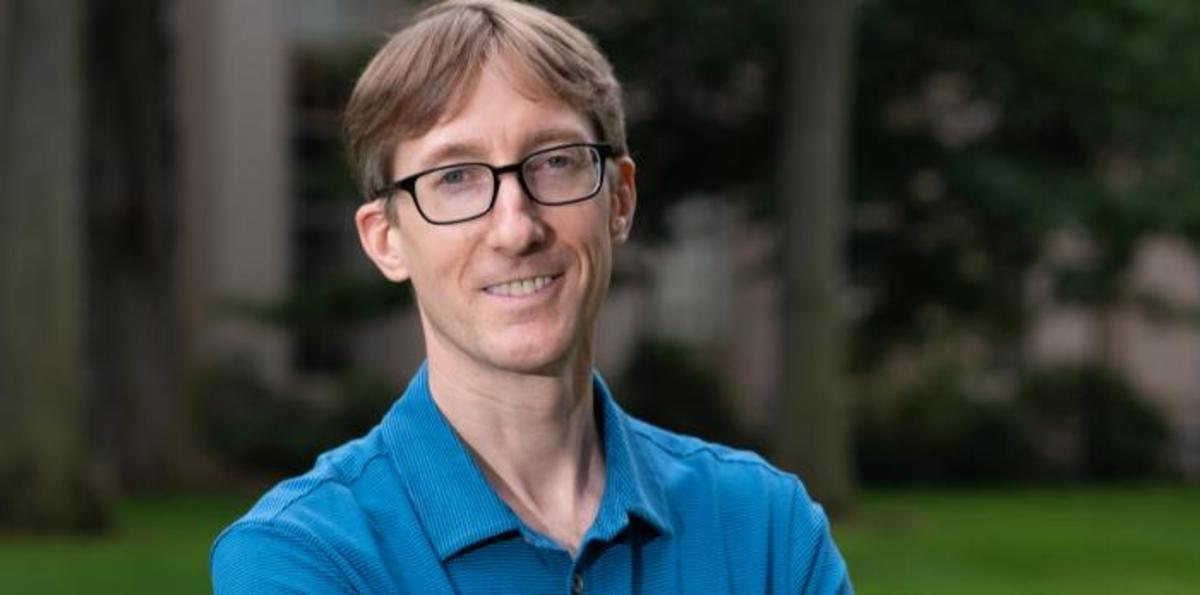Taylor Perron receives 2021 MacArthur Fellowship
Taylor Perron receives 2021 MacArthur Fellowship

Read this at MIT News
Taylor Perron, professor of geology and associate department head for education in MIT’s Department of Earth, Atmospheric, and Planetary Sciences, has been named a recipient of a 2021 MacArthur Fellowship.
Often referred to as “genius grants,” the fellowships are awarded by the John D. and Catherine T. MacArthur Foundation to talented individuals in a variety of fields. Each MacArthur fellow receives a $625,000 stipend, which they are free to use as they see fit. Recipients are notified by the foundation of their selection shortly before the fellowships are publicly announced.
“After I had absorbed what they were saying, the first thing I thought was, I couldn’t wait to tell my wife, Lisa,” Perron says of receiving the call. “We’ve been a team through all of this and have had a pretty incredible journey, and I was just eager to share that with her.”
Perron is a geomorphologist who seeks to understand the mechanisms that shape landscapes on Earth and other planets. His work combines mathematical modeling and computer simulations of landscape evolution; analysis of remote-sensing and spacecraft data; and field studies in regions such as the Appalachian Mountains, Hawaii, and the Amazon rainforest to trace how landscapes evolved over time and how they may change in the future.
“If we can understand how climate and life and geological processes have interacted over a long time to create the landscapes we see now, we can use that information to anticipate where the landscape is headed in the future,” Perron says.
His group has developed models that describe how river systems generate intricate branching patterns as a result of competing erosional processes, and how climate influences erosion on continents, islands, and reefs.
Perron has also applied his methods beyond Earth, to retrace the evolution of the surfaces of Mars and Saturn’s moon Titan. His group has used spacecraft images and data to show how features on Titan, which appear to be active river networks, were likely carved out by raining liquid methane. On Mars, his analyses have supported the idea that the Red Planet once harbored an ocean and that the former shoreline of this Martian ocean is now warped as a result of a shift in the planet’s spin axis.
He is continuing to map out the details of Mars and Titan’s landscape histories, which he hopes will provide clues to their ancient climates and habitability.
“I think answers to some of the big questions about the solar system are written in planetary landscapes,” Perron says. “For example, why did Mars start off with lakes and rivers, but end up as a frozen desert? And if a world like Titan has weather like ours, but with a methane cycle instead of a water cycle, could an environment like that have supported life? One thing we try to do is figure out how to read the landscape to find the answers to those questions.”
Perron has expanded his group’s focus to examine how changing landscapes affect biodiversity, for instance in Appalachia and in the Amazon — both freshwater systems that host some of the most diverse populations of life on the planet.
“If we can figure out how changes in the physical landscape may have generated regions of really high biodiversity, that should help us learn how to conserve it,” Perron says.
Recently, his group has also begun to investigate the influence of landscape evolution on human history. Perron is collaborating with archaeologists on projects to study the effect of physical landscapes on human migration in the Americas, and how the response of rivers to ice ages may have helped humans develop complex farming societies in the Amazon.
Looking ahead, he plans to apply the MacArthur grant toward these projects and other “intellectual risks” — ideas that have potential for failure but could be highly rewarding if they succeed. The fellowship will also provide resources for his group to continue collaborating across disciplines and continents.
“I’ve learned a lot from reaching out to people in other fields — everything from granular mechanics to fish biology,” Perron says. “That has broadened my scientific horizons and helped us do innovative work. Having the fellowship will provide more flexibility to allow us to continue connecting with people from other fields and other parts of the world.”
Perron holds a BA in earth and planetary sciences and archaeology from Harvard University and a PhD in earth and planetary science from the University of California at Berkeley. He joined MIT as a faculty member in 2009.
Image courtesy the John D. and Catherine T. MacArthur Foundation